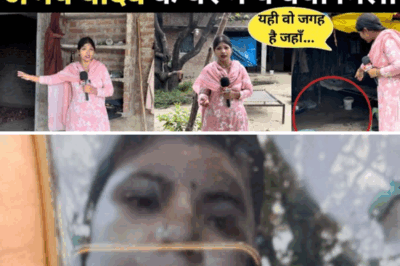In recent days, air travelers have become increasingly anxious about flying on the Boeing 787 Dreamliner, once considered one of the world’s safest aircraft. Within just 24 hours, three separate Dreamliner incidents have made headlines, raising serious questions about the plane’s safety.
The first incident involved Air India flight AI315 from Hong Kong to Delhi, which was forced to return to Hong Kong due to a technical glitch. Similarly, a British Airways Dreamliner flying from London to Chennai had to turn back shortly after takeoff because of a flap adjustment failure. Passengers captured the incident on their mobile phones, and the video has since gone viral, showing gas leaking from the left wing flaps.
Meanwhile, a Lufthansa Dreamliner traveling from Frankfurt to Hyderabad was diverted back to Frankfurt after a bomb threat. Fortunately, in all three cases, passengers were unharmed.

These incidents come just days after the tragic crash of Air India flight AI171 in Ahmedabad, a Boeing 787 Dreamliner, which claimed the lives of 241 out of 242 people on board. The crash has intensified fears among travelers, especially as the investigation is still ongoing. Teams of Boeing technicians and experts have arrived in India to assist with the probe, while the Indian government has ordered a comprehensive safety check of all Dreamliner aircraft operating in the country.
The Ahmedabad crash has drawn parallels to the Boeing 737 Max crisis in 2018 and 2019, when two fatal crashes led to the global grounding of the model. The current situation is being closely monitored by aviation authorities worldwide, with some questioning whether the Dreamliner might face similar restrictions.
In addition to the Dreamliner incidents, a Saudi Airlines Airbus A330 carrying 250 Hajj pilgrims narrowly avoided disaster at Lucknow airport when sparks and smoke were seen coming from the left landing gear during landing. All passengers were evacuated safely.
The aftermath of the Ahmedabad crash has been particularly harrowing, as families struggle to identify victims through DNA testing due to the severe burns suffered by many bodies. The process has been expedited with additional staff and equipment, but remains a painful ordeal for the families involved.
As investigations continue, the aviation community is on high alert. The Indian government has formed a high-level committee to examine the crash, with international experts also participating due to the presence of foreign nationals among the victims.
While air travel remains statistically safe, the recent spate of incidents involving the Boeing 787 Dreamliner has shaken public confidence. The speed and transparency of the ongoing investigations will be crucial in restoring trust and ensuring that such tragedies do not happen again.
News
Shocking Triple M*rder Over Property Dispute Shatters Rural Family in Uttar Pradesh
Shocking Triple Murder Over Property Dispute Shatters Rural Family in Uttar Pradesh Tragedy struck a quiet village in Uttar Pradesh…
Heavy Rains in North and Central India Trigger Flood Threats in Prayagraj as Ganga and Yamuna Rivers Rise
Heavy Rains in North and Central India Trigger Flood Threats in Prayagraj as Ganga and Yamuna Rivers Rise Incessant…
Family Demands Justice Following Alleged R@pe and M*rder of Young Female Police Constable
Barabanki, UP: Family Demands Justice Following Alleged R@pe and M*rder of Young Female Police Constable Tragedy has struck a family…
Tej Pratap Yadav Confirms 2024 Candidacy from Mahua, Addresses Party Disputes and Vision for Youth
Tej Pratap Yadav Confirms 2024 Candidacy from Mahua, Addresses Party Disputes and Vision for Youth Senior RJD leader and former…
Sad News for Katrina Kaif’s Family as Katrina &Vicky Kaushal’s Father Sham Kaushal wants to Su*cide!
Katrina Kaif’s Father-in-Law, Sham Kaushal, Opens Up About His Cancer Battle and Brush with Despair Sham Kaushal, father of Bollywood…
Kajol’s Daughter Nysa Devgn got Drunk as she Graduate from Switzerland, Kajol got emotional!
Nysa Devgan Graduates in Business Administration from Switzerland; Kajol and Ajay Devgn Celebrate Proud Moment Nysa Devgan, the daughter of…
End of content
No more pages to load










